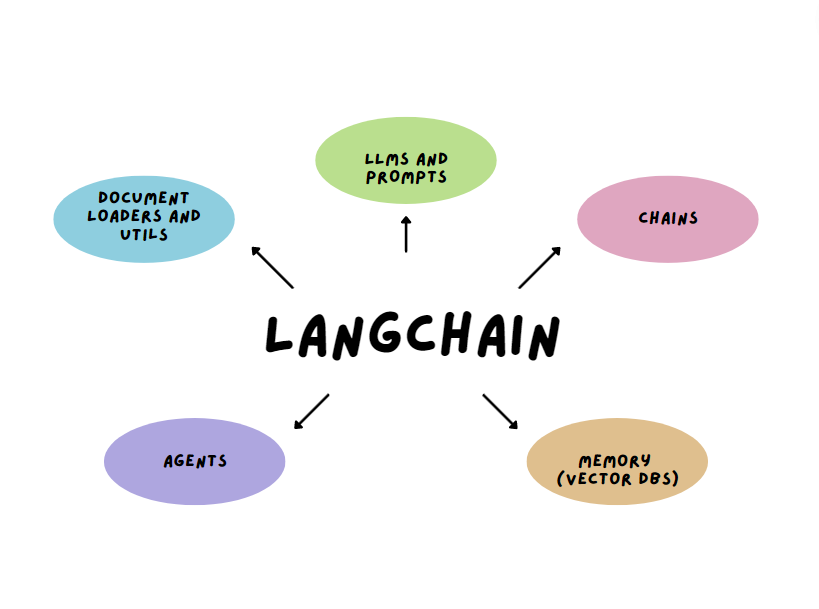Contents
Difference between Pinecone and LangChain?
In the rapidly evolving world of Natural Language Processing (NLP) and data management, understanding the tools at our disposal becomes paramount. Pinecone and LangChain, two powerful vector databases, have emerged as frontrunners in this domain. This article aims to shed light on their distinct capabilities, offering readers a comprehensive comparison to make informed decisions.
Also Read – Pinecone vs Elasticsearch: Comparative Vector Database Analysis
Pinecone v/s LangChain – Features and Functionalities
Pinecone: The Vector Specialist
Pinecone, a managed vector database service, is tailored for large-scale similarity search, making it a go-to for machine learning applications. Its prowess lies in:
- Handling high-dimensional vector data efficiently.
- Offering seamless integration with popular machine learning frameworks.
- Providing advanced algorithms for precise similarity searches in vast vector spaces.
Pinecone is not just any database; it’s specifically designed to manage vectors. This means it’s optimized to handle data that’s represented as arrays of numbers, which is common in machine learning. This unique focus allows Pinecone to offer specialized services that general databases can’t.
Large-Scale Similarity Search: In the world of machine learning and NLP, finding similar items (be it text, images, or any other data) is crucial. Pinecone excels in this, allowing users to search for similar vectors in massive datasets quickly. This is particularly useful for tasks like content recommendation or image recognition.
Integration with Machine Learning Frameworks: Pinecone isn’t just a standalone tool; it’s designed to fit seamlessly into the broader ecosystem of machine learning. It offers out-of-the-box integration with popular frameworks like TensorFlow and PyTorch, ensuring that data scientists and engineers can easily incorporate Pinecone into their workflows.
Advanced Algorithms for Similarity Searches: Under the hood, Pinecone employs state-of-the-art algorithms to ensure that its similarity searches are both fast and accurate. This means that even as datasets grow, Pinecone maintains its performance, delivering precise results in real-time.
LangChain: Bridging Language Gaps

LangChain, on the other hand, excels in language processing and translation. Its features include:
- Advanced NLP capabilities for real-time translation.
- Integration with other language tools and platforms.
- Offering a chain-based approach, enhancing the accuracy and context of translations.
Advanced NLP Capabilities:
LangChain isn’t just a translation tool; it’s a comprehensive language processing platform. It can understand, interpret, and generate human language, making it invaluable for tasks that require a deep understanding of text, from sentiment analysis to content summarization.
Real-time Translation: In today’s globalized world, the ability to communicate across language barriers is crucial. LangChain offers real-time translation, ensuring that users can understand and be understood instantly, no matter the language.
Integration with Other Language Tools: LangChain is designed to play well with others. It can be integrated with other language processing tools and platforms, allowing businesses to build comprehensive language processing pipelines that leverage the best features of each tool.
Chain-Based Approach to Translation: Traditional translation tools often work word by word, leading to translations that are technically correct but lack nuance. LangChain’s chain-based approach considers the broader context, ensuring that translations are not only accurate but also contextually relevant and natural-sounding.
Pinecone v/s LangChain – Use Cases and Applications
Pinecone in Action
From e-commerce platforms leveraging Pinecone for product recommendations to media houses using it for content-based retrieval, Pinecone’s applications are vast. Its ability to handle high-dimensional data makes it ideal for recommendation systems, image search, and various NLP tasks.
LangChain’s Domain
LangChain shines in applications requiring language translation and processing. Whether it’s real-time translation for global communication platforms or processing large volumes of text data for insights, LangChain’s powerful chain-based approach ensures accuracy and context preservation.
Pinecone v/s LangChain – Benefits and Drawbacks
Pinecone Benefits
1. Scalability: Pinecone’s architecture is designed to scale horizontally. As data grows, businesses can simply add more nodes to the Pinecone cluster, ensuring that performance remains consistent. This scalability is crucial for organizations that deal with ever-increasing datasets.
2. Accuracy: In the realm of similarity searches, accuracy is paramount. Pinecone’s advanced algorithms ensure that results are not only fast but also precise, even when dealing with vast vector spaces. This means businesses can trust the insights derived from Pinecone.
3. Integration: Pinecone’s seamless compatibility with popular machine learning frameworks like TensorFlow and PyTorch ensures that data scientists and engineers can easily transition from model training to deployment, streamlining the machine learning pipeline.
Pinecone Drawbacks:
1. Specialized Focus: While Pinecone’s focus on vector data is its strength, it also means it’s not a one-size-fits-all solution. For tasks outside of vector data management and similarity search, other databases might be more suitable.
2. Learning Curve: Being a specialized tool, there’s a learning curve associated with mastering Pinecone, especially for those unfamiliar with vector databases.
LangChain Benefits:
1. Real-time Translation: In our globalized world, instant communication is essential. LangChain’s real-time translation ensures that language barriers are broken down instantly, facilitating seamless communication across borders.
2. Advanced NLP Prowess: Beyond mere translation, LangChain offers a suite of advanced NLP capabilities. From sentiment analysis to content summarization, LangChain’s algorithms ensure a deep understanding of text.
3. Integration: LangChain’s design allows for easy integration with other language tools and platforms. This modularity ensures that businesses can build a comprehensive language processing pipeline tailored to their needs.
4. Chain-Based Approach: Traditional translation often lacks nuance. LangChain’s chain-based approach ensures contextually relevant and natural-sounding translations, enhancing the quality of communication.
LangChain Drawbacks:
1. Specialization in Language: While LangChain excels in language processing and translation, it might not be the best fit for tasks outside this domain.
2. Dependency on Language Models: The quality of LangChain’s output is dependent on the underlying language models. As language evolves, these models need to be updated to maintain accuracy.
However, like all tools, both Pinecone and LangChain have their limitations. It’s essential to evaluate them based on specific project requirements.
Pinecone v/s LangChain – Case Studies and Examples
Pinecone’s Success Story
A global e-commerce platform recently integrated Pinecone to enhance its product recommendation system. The result? A 25% increase in user engagement and a 15% boost in sales, showcasing Pinecone’s efficacy in real-world scenarios.
LangChain’s Triumph
A multinational corporation adopted LangChain for its internal communication across branches in different countries. The seamless translation ensured clear communication, reducing misunderstandings by 40% and enhancing overall productivity.
The choice between Pinecone and LangChain boils down to specific needs. For high-dimensional vector data and similarity searches, Pinecone is unparalleled. However, for advanced language processing and translation, LangChain stands out. As the realms of NLP and data management continue to expand, understanding and leveraging these tools will be the key to success.
These entities encapsulate the core concepts, tools, and features discussed throughout the article, providing a comprehensive overview of the topics covered.
Pinecone:
- Managed vector database service
- High-dimensional vector data
- Recommendation systems
- Image search
- Approximate nearest neighbor (ANN) search
- TensorFlow and PyTorch (machine learning frameworks)
- Inverted index
- Specialized focus
- Learning curve
- Cluster (in the context of adding more nodes)
LangChain:
- Language processing tool
- Translation capabilities
- Chain-based approach
- Sentiment analysis
- Content summarization
- Contextual translation
- Global communication platforms
- Language barriers
- Integration with other language tools
- Evolution of language
RedBlink is an AI consulting and generative AI development company, offering a range of services in the field of artificial intelligence. With their expertise in ChatGPT app development and machine learning development, they provide businesses with the ability to leverage advanced technologies for various applications. By hiring the skilled team of ChatGPT developers and machine learning engineers at RedBlink, businesses can unlock the potential of AI and enhance their operations with customized solutions tailored to their specific needs.

Director of Digital Marketing | NLP Entity SEO Specialist | Data Scientist | Growth Ninja
With more than 15 years of experience, Loveneet Singh is a seasoned digital marketing director, NLP entity SEO specialist, and data scientist. With a passion for all things Google, WordPress, SEO services, web development, and digital marketing, he brings a wealth of knowledge and expertise to every project. Loveneet’s commitment to creating people-first content that aligns with Google’s guidelines ensures that his articles provide a satisfying experience for readers. Stay updated with his insights and strategies to boost your online presence.
